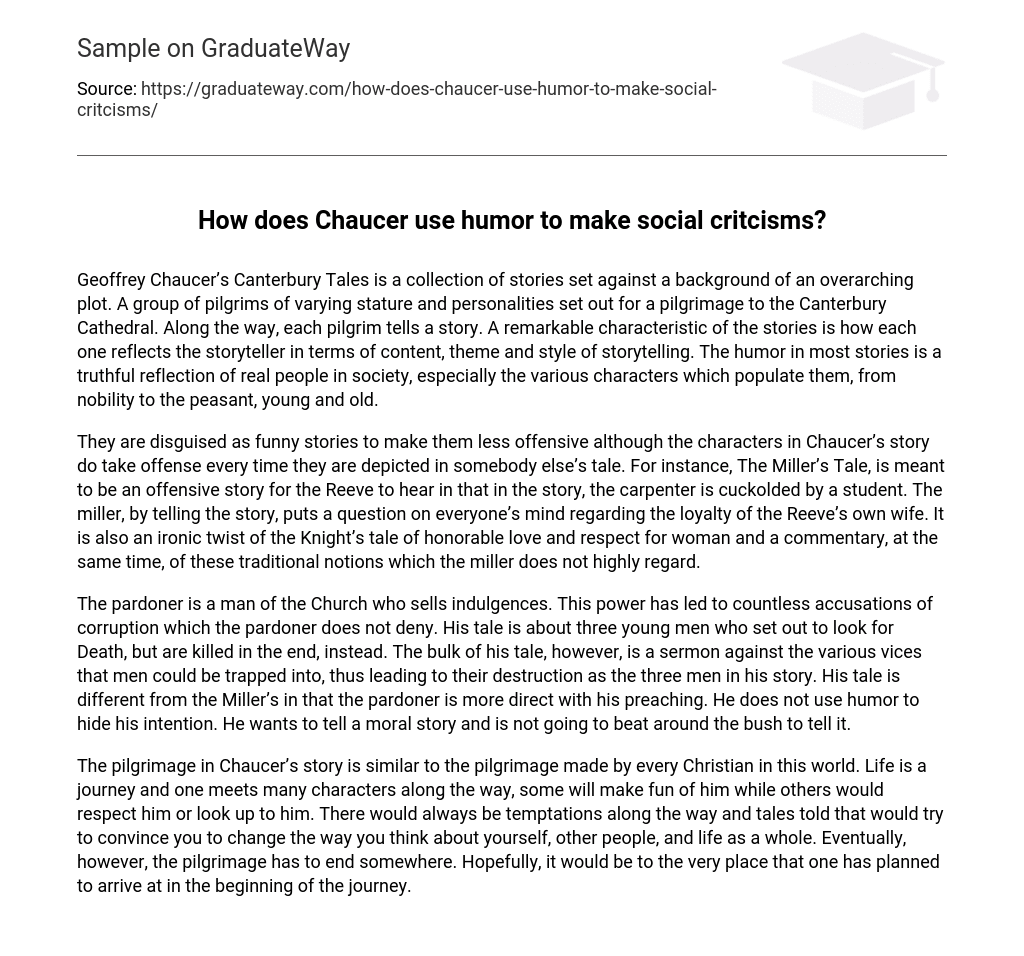Geoffrey Chaucer’s Canterbury Tales is a collection of stories set against a background of an overarching plot. A group of pilgrims of varying stature and personalities set out for a pilgrimage to the Canterbury Cathedral. Along the way, each pilgrim tells a story. A remarkable characteristic of the stories is how each one reflects the storyteller in terms of content, theme and style of storytelling. The humor in most stories is a truthful reflection of real people in society, especially the various characters which populate them, from nobility to the peasant, young and old.
They are disguised as funny stories to make them less offensive although the characters in Chaucer’s story do take offense every time they are depicted in somebody else’s tale. For instance, The Miller’s Tale, is meant to be an offensive story for the Reeve to hear in that in the story, the carpenter is cuckolded by a student. The miller, by telling the story, puts a question on everyone’s mind regarding the loyalty of the Reeve’s own wife. It is also an ironic twist of the Knight’s tale of honorable love and respect for woman and a commentary, at the same time, of these traditional notions which the miller does not highly regard.
The pardoner is a man of the Church who sells indulgences. This power has led to countless accusations of corruption which the pardoner does not deny. His tale is about three young men who set out to look for Death, but are killed in the end, instead. The bulk of his tale, however, is a sermon against the various vices that men could be trapped into, thus leading to their destruction as the three men in his story. His tale is different from the Miller’s in that the pardoner is more direct with his preaching. He does not use humor to hide his intention. He wants to tell a moral story and is not going to beat around the bush to tell it.
The pilgrimage in Chaucer’s story is similar to the pilgrimage made by every Christian in this world. Life is a journey and one meets many characters along the way, some will make fun of him while others would respect him or look up to him. There would always be temptations along the way and tales told that would try to convince you to change the way you think about yourself, other people, and life as a whole. Eventually, however, the pilgrimage has to end somewhere. Hopefully, it would be to the very place that one has planned to arrive at in the beginning of the journey.





